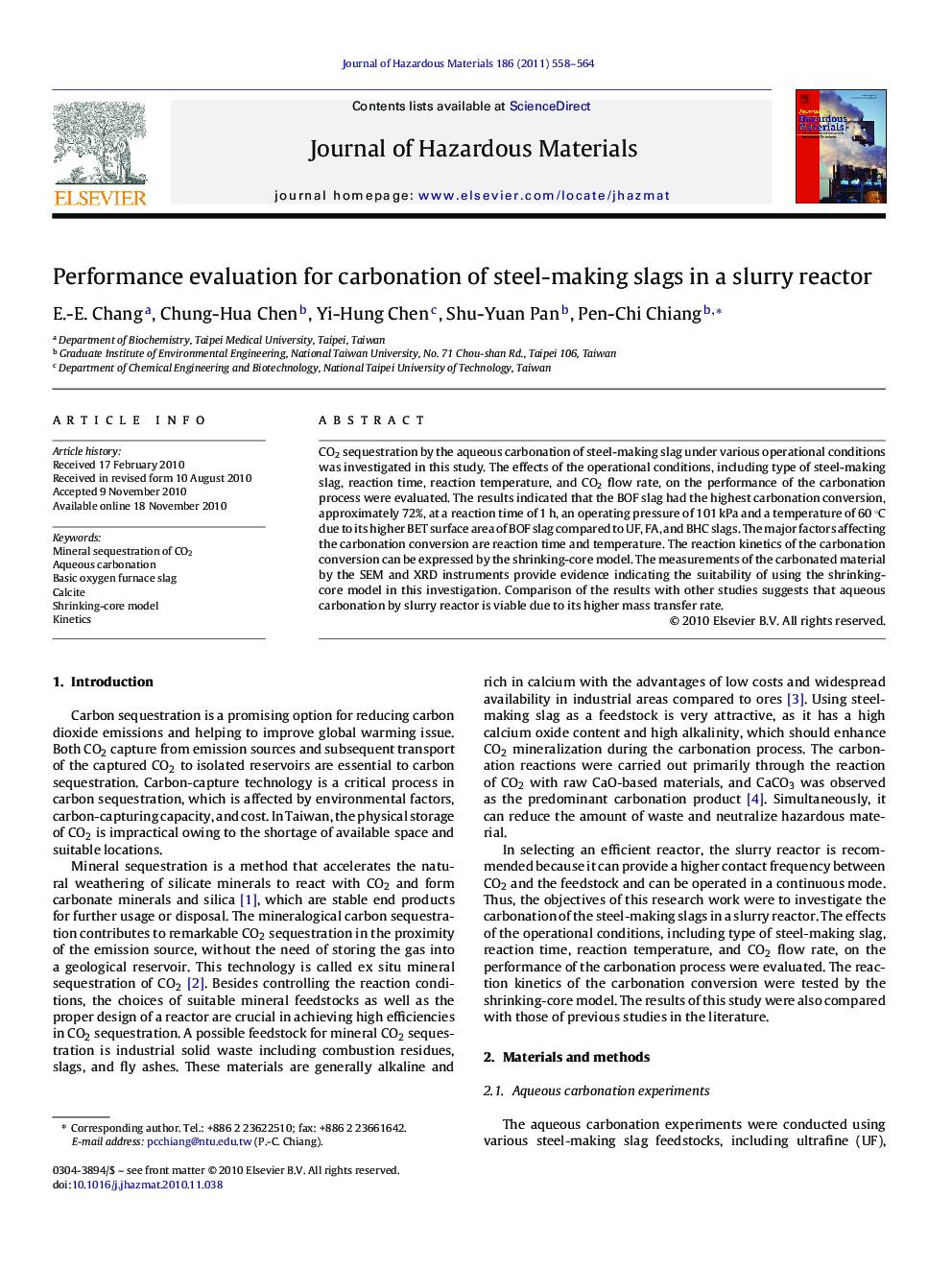| Article ID | Journal | Published Year | Pages | File Type |
|---|---|---|---|---|
| 10372763 | Journal of Hazardous Materials | 2011 | 7 Pages |
Abstract
CO2 sequestration by the aqueous carbonation of steel-making slag under various operational conditions was investigated in this study. The effects of the operational conditions, including type of steel-making slag, reaction time, reaction temperature, and CO2 flow rate, on the performance of the carbonation process were evaluated. The results indicated that the BOF slag had the highest carbonation conversion, approximately 72%, at a reaction time of 1 h, an operating pressure of 101 kPa and a temperature of 60 °C due to its higher BET surface area of BOF slag compared to UF, FA, and BHC slags. The major factors affecting the carbonation conversion are reaction time and temperature. The reaction kinetics of the carbonation conversion can be expressed by the shrinking-core model. The measurements of the carbonated material by the SEM and XRD instruments provide evidence indicating the suitability of using the shrinking-core model in this investigation. Comparison of the results with other studies suggests that aqueous carbonation by slurry reactor is viable due to its higher mass transfer rate.
Related Topics
Physical Sciences and Engineering
Chemical Engineering
Chemical Health and Safety
Authors
E.-E. Chang, Chung-Hua Chen, Yi-Hung Chen, Shu-Yuan Pan, Pen-Chi Chiang,
